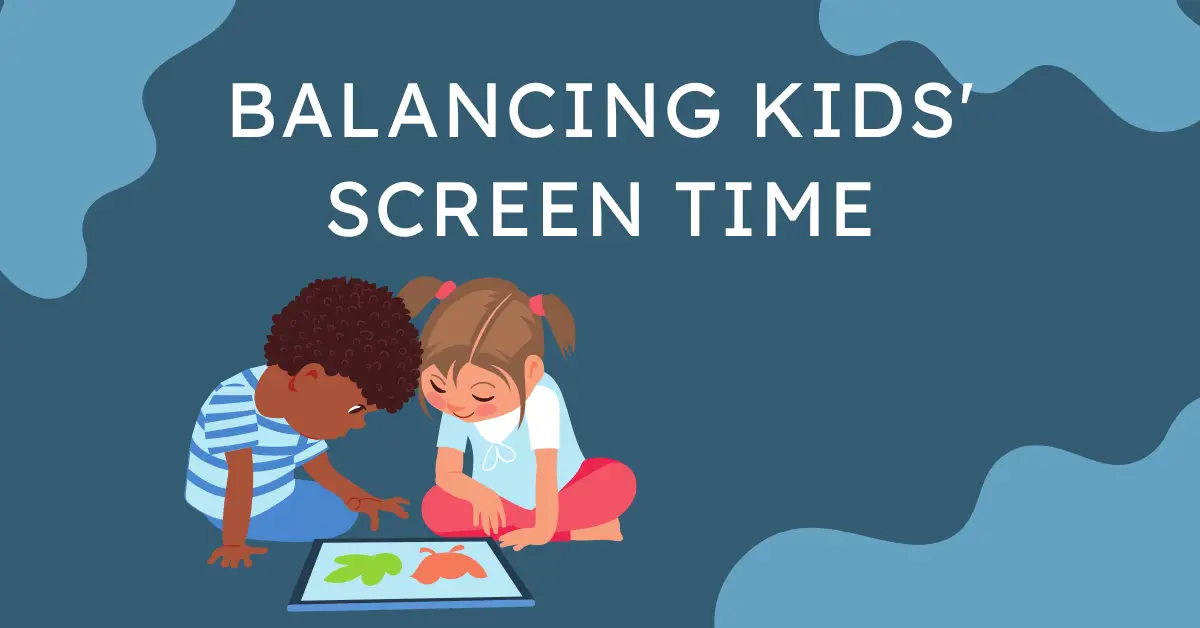In today’s digital age, screen time has become an integral part of children’s lives. From educational videos to gaming apps, screens are everywhere. But as a parent, how do you navigate the fine line between beneficial and excessive screen time? This blog delves into expert opinions, recommended guidelines, and practical strategies for managing your child’s screen use effectively.
The Digital Landscape: A Double-Edged Sword
The American Academy of Pediatrics (AAP) provides a framework to guide parents on screen time for kids. Their recommendations suggest no screens for children under 18 months, except for video chatting. For toddlers aged 18-24 months, screens should be introduced with caution, emphasizing high-quality educational content. Yet, in reality, many parents find it challenging to adhere to these guidelines due to various pressures, from busy schedules to the allure of engaging content.
The Risks of Excessive Screen Time
- Physical Health Concerns: Prolonged screen time has been linked to obesity and a sedentary lifestyle. Children glued to screens often miss out on physical play, which is crucial for their health and development.
- Behavioral Issues: Research indicates a correlation between excessive screen time and behavioral problems in children, including increased aggression and decreased attention span.
- Cognitive Development Delays: The early years are critical for brain development, and screens can detract from essential interactive play that fosters language and social skills.
Understanding the Guidelines: What Experts Say
The AAP suggests limiting screen time to one hour per day for children aged 2 to 5. For school-aged children, while there are no strict limits, it’s essential to ensure screen time doesn’t displace other critical activities like reading, homework, and outdoor play.
Dr. Nusheen Ameenuddin, a pediatrician and author of the AAP’s policy statement, emphasizes that “parents aren’t going to be perfect 100% of the time.” This acknowledgment of modern parenting realities opens up a more compassionate conversation around screen time.
The Parent Dilemma: Guilt and Necessity
Many parents feel guilty about their children’s screen time, often using it as a means to manage their own busy lives. Maya Valree, a mother of a 3-year-old, articulates this struggle, stating, “Screen time is in the top three or five things to feel guilty about as a mom.” However, it’s important to recognize that screens can also serve educational purposes and provide necessary downtime for parents.
Strategies for Managing Screen Time
- Set Clear Boundaries: Designate specific times for screen use, such as during certain hours of the day, to create a routine.
- Co-View and Engage: Whenever possible, watch shows or play games together with your child. This not only enhances the learning experience but also allows you to discuss the content.
- Encourage Alternatives: Offer a variety of non-screen activities like puzzles, crafts, or outdoor play to diversify your child’s experiences and interests.
- Use Technology Wisely: Opt for high-quality educational content that aligns with your child’s developmental stage. Resources like PBS Kids often provide beneficial programming.
- Monitor and Adjust: Regularly assess your child’s screen habits and make adjustments as needed. If screen time is interfering with sleep or social interactions, it might be time to reevaluate.
Embracing the Digital World
While the concerns about excessive screen time are valid, it’s essential to approach the subject with balance. Jacqueline Nesi, an assistant professor of psychiatry, highlights that strict limitations may not be feasible for every family. Instead, understanding that screens can play a role in education and entertainment allows for a more nuanced perspective.
Conclusion
Navigating the complexities of screen time for kids in today’s digital age requires understanding, flexibility, and a willingness to adapt. By setting realistic boundaries and encouraging engaging, educational content, parents can help their children thrive in a world filled with screens. The key is to find a healthy balance that works for your family, allowing for the benefits of technology while minimizing its potential risks.
Final Thoughts
In a world dominated by screens, parents must be proactive in managing their children’s digital consumption. By fostering a healthy relationship with technology, we can equip our children with the skills they need to navigate the digital landscape safely and effectively.
